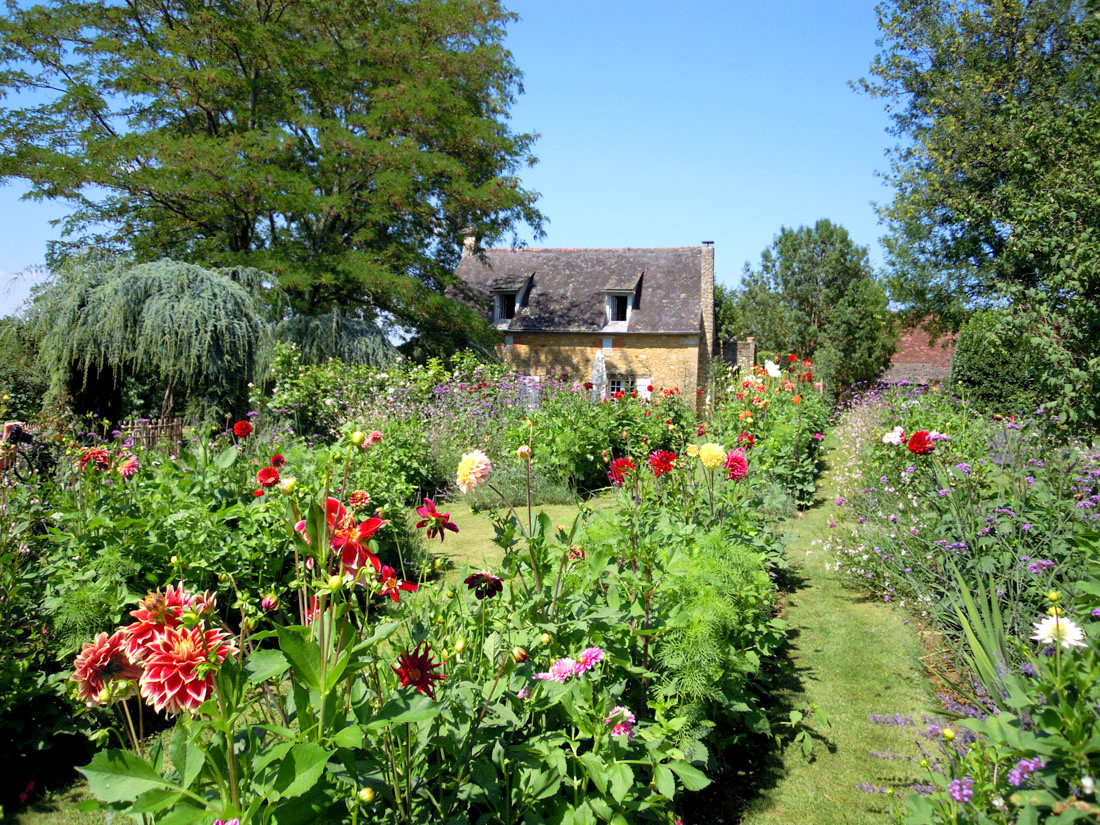The Eyrignac Gardens (Jardins du Manoir d’Eyrignac) are located in the commune of Salignac-Eyvigues in Périgord Noir (département of Dordogne), 13 km north-east from Sarlat-la-Canéda. Open to the public, the magnificent gardens are a typical example of French formal gardens with perfectly manicured hedges with wonderful perspectives.
This style of garden is based on symmetry and the principle of imposing order over nature. French landscape architect André Le Nôtre designed French formal gardens in the 17th century for King Louis XIV. The highly-influential gardens of Versailles, Vaux-le-Vicomte and the Tuileries definitely inspired the planting plan in Eyrignac.
Historic Overview of the Eyrignac Gardens
The formal gardens in Eyrignac were originally designed in the 18th century. However, the site had been occupied by a dynasty for 500 years since the construction of the first “castel”. The domain of Eyrignac was then passed on as a heritage throughout 22 generations.
In the 17th century, the ancestor of today’s landlord of the gardens stood in position for the king in the event of the Fronde des Nobles when the Grand Condé rebelled against Mazarin. In revenge, the former dismantled the first “castel” built in the Early Middle Ages.
During the 17th century, the current manor was rebuilt on the ruins of the former “castel” by Antoine de Costes de la Calprenède who designed the first gardens. His great-grandson, Louis-Antoine Gabriel de la Calprenède, introduced the formal gardens inspired by the Italian villas which were in fashion at that time. In the 19th century, they were completely redesigned and included an English garden.

It is the father of today’s landlord who revived the French formal gardens in Eyrignac:
“This garden did not correspond with the vision that my father, Gilles Sermadiras, had of Eyrignac. He very quickly had the desire to redesign it just as it must have been in the 18th Century.”

Following his vision, Gilles Sermadiras de Pouzols de Lile found his inspiration by searching in the ground for all the traces of the formal garden was long forgotten through walls, stairs, old basins, etc. He redesigned the garden himself which represents the vision and determination of Gilles Sermadiras.
No doubt that this passion led to a successful enterprise, a unique and unforgettable garden among the most beautiful of France:
“When the plants were put in, they were all just 20 cm high, yet they already revealed the garden as it is today”.
Visit the Gardens of Eyrignac
“These gardens blend the classical and structured harmony of French gardens with the movements and imagination of the distant Italian Renaissance…”
The estate covers 200 hectares of land kept in its natural state which surrounds the manor and its celebrated garden. The formal gardens of Eyrignac is made up of all the shades of green with its yews, box-trees, hornbeams and cypresses. The geometrical shapes and the rectilinear alleys are reminiscent of the original style.
The Gardens of Eyrignac are therefore famous for their topiary art displayed through the clipping of the foliage and twigs of trees and shrubs which gives a variety of defined shapes, either geometric or fanciful. The particularity of the gardens is due to the well-maintained topiaries which remain in harmony with the architectural lines of the estate: plant sculptures, rooms of greenery, box embroideries, borders in the French style.

The Eyrignac Gardens feature a long pool, a flower garden, an orchard, a kitchen garden, parterres and a rose garden.
The recently added white rose garden adds a note of lightness and poetry with its 700 white roses from 5 different varieties. The first roses bloom in May and flowering lasts throughout the summer and until the frost.
Throughout the whole garden, more than 5,500 bulbs are planted each year in October and November. In spring time, tulips, hyacinths and daffodils bloom in the woods and the gardens.

Two botanical paths (2.5 and 4.5 km) give the visitor the option to discover the 200 hectare domain which surrounds the formal garden. Designed as an ideal complement to the visit of the manicured gardens, they allow you to explore the plants of the region, and to discover both their virtues and how to use them. The marked paths will provide a shaded walk accessible to all with views to the surrounding valleys from the orientation table.

Since 2004, the Gardens have been listed as a “Remarkable Garden” (Jardin remarquable) by the French Ministry of Culture. They are also part of the association “France’s most beautiful gardens”.
For more information about the gardens of Eyrignac, visit: www.eyrignac.com
We would like to thank the Gardens of Eyrignac for letting us use their photo library to illustrate this article.
Featured image: The gardens of Eyrignac © Eric Sander (ericsander.com)




